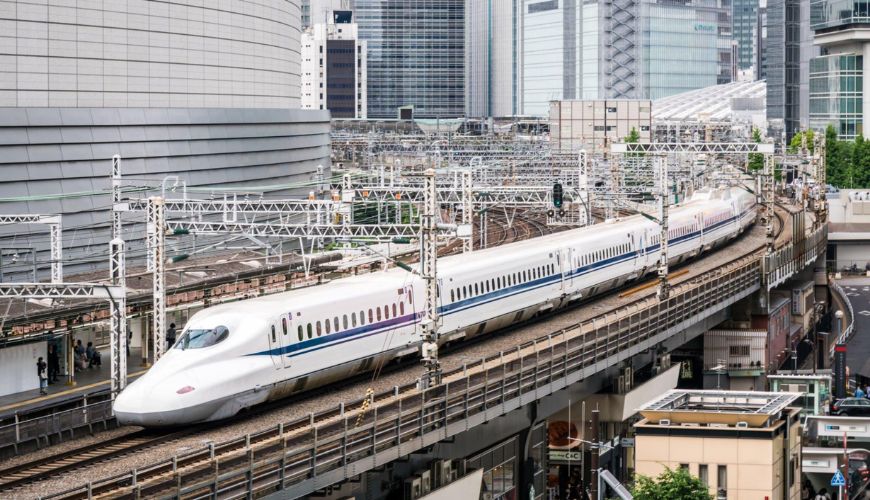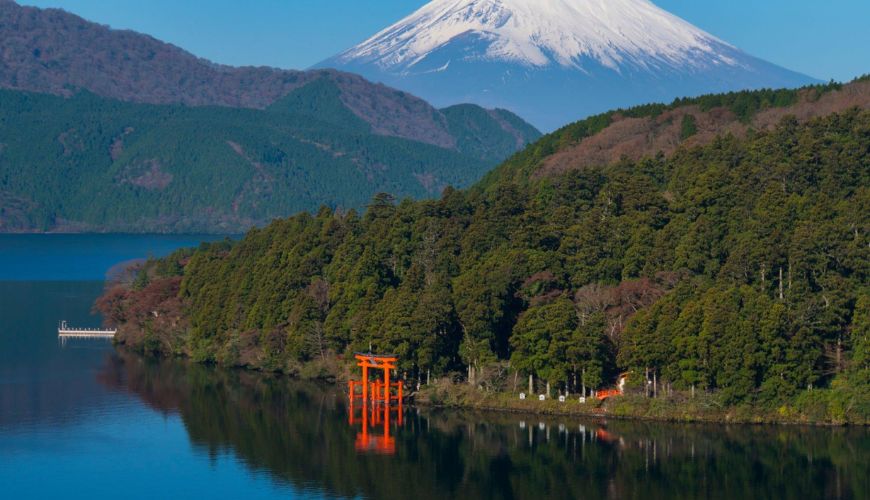Call Us: +1 315 998 1998
After completing my studies, I embarked on an adventurous journey, dragging my suitcase halfway across the world to explore the enchanting city of Kanazawa on Japan's central Honshu Island. Kanazawa, situated on the Shinkansen (bullet train) route, offered a unique blend of traditional charm and modern convenience. During my travels, I discovered that these sleek trains were a remarkable departure from the ones I had grown up with back home. If you're considering a trip to Japan, consider consulting a Japan travel guide to help you make the most of your visit to this exciting nation.
rnSpacious, clean, and pleasant, Japan's bullet trains are an outgrowth of the constant Japanese desire for innovation and efficiency. As the doors shut – just on schedule — the hubbub of the station is left behind. I always love how tranquil these trains are and how gently your fellow passengers talk. With bullet train speeds reaching around 200 mph (321 km/h), there's a tremendous thrill in seeing the landscape rush by.
rn Higashi chaya district, Kanazawa
Higashi chaya district, Kanazawa
Japan's largest island, Honshu, has a bullet train network connecting many major cities and areas.
rnI recommend arriving in Tokyo and exploring for a few days. I suggest going someplace less hectic after Tokyo. Two and a half hours away from Tokyo by bullet train lies the port city of Kanazawa, which offers a calm, clean alternative to Tokyo. Although I have a slight prejudice since I used to live here, its food markets, charming temples, and accessible size make it a pleasant place to spend a few days. One of the Three Great Gardens of Japan, Kenroku-en Gardens, is the reason it is most well-known.
rnA sad yet intriguing stop on the bullet train route is Hiroshima. I usually spend the five hours or so it takes to get there with my nose pressed against the window, taking in the fast-moving scenery. The Museum and Peace Memorial Park in Hiroshima offers a sobering reminder of the horrors of war, along with an encouraging collection of posters and artwork documenting continuous attempts to preserve peace.
rnI then spent around two hours traveling east on a bullet train to Kyoto, the cultural epicenter of Japan. Visit Kyoto's geisha quarter, Gion, with a native guide to learn about one of Japan's most enigmatic customs. For an authentic taste of Japan, I advise staying in a ryokan, a historical inn that was popular with merchants and samurai.
rnA beautiful two-hour and twenty-minute bullet train ride connects Kyoto to Tokyo. On a clear day, you can see the snow-capped cone of Mount Fuji, so I always sit on the train's left side. Everyone runs to the window to snap pictures of it as soon as it appears, creating a joyous mood.
rn Shinkansen Bullet Train Speeding in Tokyo
Shinkansen Bullet Train Speeding in Tokyo
Individual tickets for bullet trains may be rather pricey. In my experience, the Japan Rail Pass is the most cost-effective option, even if you only plan to make a few trips. The pass includes most routes and allows travel for 7, 14, or 21 days. Foreign visitors must purchase the pass in advance of their arrival in Japan.
rnYour guide will be able to secure seats for you and accompany you to the local rail ticket office to receive your pass. Making a reservation for a seat is optional, although it is an excellent perk of the pass. The regular compartments are large and comfy, but you may pay extra for the green vehicles if you want more space.
rn Tokyo Train Station
Tokyo Train Station
The cabins are roomy, with enough overhead and under-seat storage for a carry-on overnight bag. The Japanese have developed a practical system for managing enormous pieces of baggage. Pack a compact overnight bag the day before your train trip. Your primary bags will be weighed and measured at the hotel's front desk before being sent on to your destination accommodation.
rnWhen you get there, your bags will be waiting for you. At first, I was reluctant to entrust my bags to this system, but I soon realized my worries were unfounded. There is always a chance of a holdup or misplaced bags.
rn Ginza Station of Tokyo Metro in Japan
Ginza Station of Tokyo Metro in Japan
When I first stepped foot at Shinjuku Station in western Tokyo, the station utterly took me aback. With 36 platforms and 200 exits, it is the busiest station in the world.
rnEvery day of the year, the station serves as a gateway for millions of travelers, much like Grand Central during the holiday rush. Allow yourself plenty of downtime to breathe, enjoy coffee, and people-watch. Even though there is constant motion, you'll soon realize that everything is well-marked (in both Japanese and English), making it simple to find your way about.
rnInvestigate the station before boarding the train. There are many stores and restaurants at major airports, such as those in Tokyo and Kyoto. Many people in the area come here for lunch since the cuisine is so outstanding. Whenever I need ramen noodles, I go to Ramen Street, a stretch of vendors on the tenth level of Kyoto Station's food court. The fresh snow crab at Kanazawa Station is one of the better examples of the regional specialties available at the smaller stations.
rnThe process of locating your platform is straightforward. In addition to providing instructions and maps, we can provide you with the platform number for each departure. Throughout the station, the station displays numbers in both Japanese and English. The trick is always to arrive on time; in 2017, the average network-wide delay was 8 seconds.
rnrn
Once you've boarded the train, you may kick back and take it easy. Crew members wheel carts stocked with food, beer, hot beverages, and ice cream at predetermined times through the cabins. You should get a meal before boarding the train if you're hungry for something heartier.
rnThe restrooms look to have been recently cleaned (albeit they lack the plethora of convenient buttons seen in a Japanese five-star hotel).
rnYou'll discover that your fellow travelers are polite and mindful of your space on the plane. Japanese families often gather for meals and beverages despite the peaceful environment. Individual booths may be made by rotating the chairs around 360 degrees.
rnIt's impossible to miss a stop because of the clear announcements made in both Japanese and English. The train schedule is so precise that I frequently have to double-check the time. I will be on time if I expect the train to arrive at 11:56 a.m. I will be waiting to exit the station at precisely that time. If you want to travel quickly, stay at a hotel near the train station.
rn Hakone National Park
Hakone National Park
The flexibility of taking a few local rail rides in Japan will allow you to visit more remote areas. Narrow-gauge rail connects almost every city and town in Japan, and the Japan Rail Pass is valid on most of these lines. The trains may be older and less sophisticated than their modern counterparts, but they are just as tidy and practical.
rnThe Hakone Tozan Train is a mountain train with beautiful views. From Hakone-Yumoto village (two hours by rail from Tokyo), it winds through Hakone National Park to the picturesque hill village of Gora. It's a 40-minute drive with many directional shifts at switchbacks, tunnels, and bridges. You may ride a cable car farther into the park from Gora.
rnThe Kyoto Railway Museum is the place to go if you're interested in Japanese railroad history since it has a collection of 53 restored trains, ranging from vintage steam engines to modern bullet trains. One of Japan's oldest remaining wooden station houses from 1904 serves as the centerpiece of this museum.
rnStart thinking about your experience. These itineraries are simply suggestions for how you could enjoy some of the same experiences as our specialists. They’re just for inspiration, because your trip will be created around your particular tastes.
Start thinking about your experience. These itineraries are simply suggestions for how you could enjoy some of the same experiences as our specialists. They’re just for inspiration, because your trip will be created around your particular tastes.
Tell us about your plans and one of our specialists will plan a unique trip for you…
Can’t get any ideas for you next trip? Let TripAdvisor help you!
Find something else special